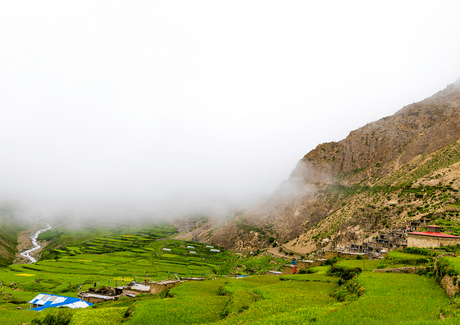
Trekking in Nepal is always an awesome idea. From experiencing the natural beauty to getting groomed with its culture and people. Nepal offers everything that you ever wished for as a traveler. The country is famous for several adventurous activities and trekking is one of them. When it comes to trekking, there are hundreds of trekking destinations that you can choose to go for. And we have listed Nar Phu Valley trek in this blog.
If you are fond of trekking to the high altitudes, Nar Phu is surely one of your destinations. The valley sits at the altitude of 4,250 meters above sea level and is a perfect place to view the Annapurna mountain range. Similarly, the culture you get to see along the routes and the people you meet will be life-long memorable for sure.
So, are you planning a trip to the Nar Phu Valley Trek in 2023? Here is all the information you need to know about the itinerary, map, permit, and cost of the trek.
You may also like:
- Tilicho lake Trek Ultimate Guide
- Mardi HimalTrek: A Comprehensive guide
- Annapurna Sanctuary: A trekkers Ultimate Guide
- Annapurna Circuit: A Trekkers Paradise
Overview of the Nar Phu Valley Trek
The Nar Phu Valley Trek is an adventure that takes you through the heart of the Himalayas, and is only open to a limited number of people each year. This trek is for the experienced hiker who wants to explore an untouched region of Nepal that’s full of natural beauty and cultural wonders.
The journey starts in Kathmandu, where there will be briefed introducion by the guide. You’ll then ride to Besi Sahar and from BesiSahar to the village of Koto, located in the Annapurna Conservation Area. From there, it’s all uphill as you make your way to the village of Nar Phu.
During your trek, you’ll explore ancient monasteries, witness stunning landscapes, and meet the friendly locals who call this region home. The trek ends with a descent back to Kathmandu.
For more information on the Nar Phu Valley Trek, please see below.
Permit Requirements and Costs
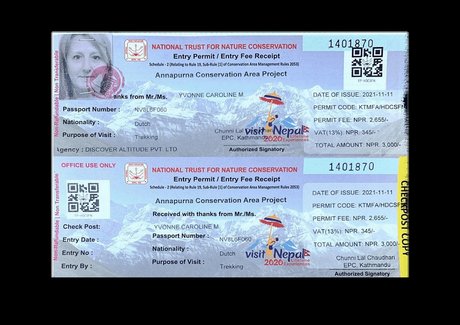
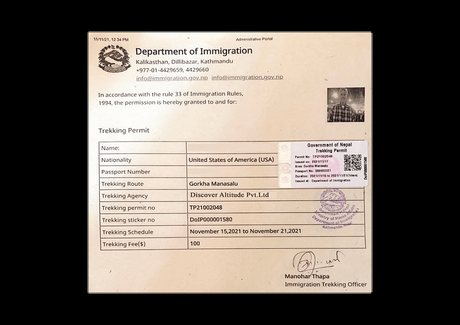
To trek in the Nar Phu Valley, you will need two permits. They are:
- Annapurna Conservation Area Permit (ACAP)
- Restricted Area Permit (RAP)
The ACAP permit costs NPR 2,000 per person. And the RAP cost $100 per person every week on the month of September to November and $75 per person every week on the month of December to August.
The trek can be completed in six days, but it’s best to allow for an extra day in case of bad weather or other unforeseen delays. This will also allow for more time to explore the valley. The cost of your trek will vary depending on your group size, the type of accommodation you choose, and whether you hire a guide or porter.
What to Expect on the Trek
Nar Phu Valley trek is a moderate to difficult trek that takes approximately 10 days. The trail winds through the pristine and beautiful Himalayas and offers stunning views of the Annapurna, Dhaulagiri and Machhapuchhre ranges. You will pass through ethnic villages, crossing high passes and glacial rivers along the way.
You can expect to be challenged both physically and mentally, but the breathtaking scenery and sense of accomplishment upon reaching the end of the trek will be well worth it.
Essential Tips for Planning Your Trek
To make your Nar Phu Valley trek a reality, it’s important to plan carefully. Here are some essential tips to make the experience even more enjoyable.
Book ahead
It’s always a good idea to book flights and accommodation in advance as the valley is quite remote and not many hotels are available. This will also help you save money.
Research
Before you start your trek, it’s important to research the terrain and weather conditions, as this will help you prepare for any unexpected events or situations.
Don’t underestimate the altitude
Altitude sickness can affect anyone when trekking in high altitude areas like the Nar Phu Valley. So be sure to take appropriate precautions and be aware of the signs of altitude sickness.
Get insurance
Getting travel insurance is essential when traveling abroad as it provides financial protection in case something goes wrong. Make sure you check what is covered by your policy before leaving home.
Pack Your Bags: What to Bring on the Nar Phu Valley Trek
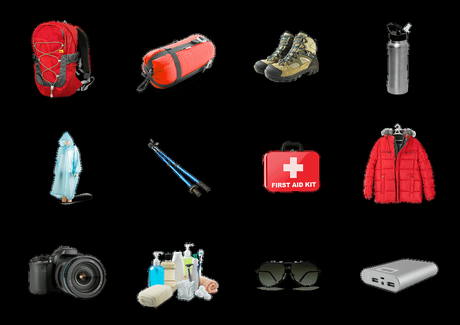
Now that you know your packing list for the trek, let’s talk about individually what you should bring. Your luggage should include proper footwear, outdoor clothing, a solid backpack, and a good sleeping bag.
When it comes to the shoes, pick something that’s comfortable and has a good grip. You’ll be walking on rocky terrain with slippery pebbles so make sure you can keep your balance without slipping.
It is important to keep your body temperature regulated while walking in different altitudes and temperatures. So, for your outdoor clothing choices, stick with layers of breathable fabrics like wool or synthetic fabrics. Don’t forget hats, gloves and scarves too!
A solid backpack is essential. Also make sure you get one with adjustable straps, waterproof exterior pockets and an internal frame for better comfortability. Last but not least, a sleeping bag will also come in handy during cold nights in the mountainside.
Nar Phu Valley Trek Itinerary
Your trek will start in Kathmandu, where you’ll be driven to BesiSahar, a 6-hour drive away. From there, you’ll be walking on trails that have been used for centuries by locals and traders.
Your first stop will be Tilije village, and then up to Meta where you’ll get your first close up views of Manaslu and the Himalayas. Then, you’ll trek up the Nar Phu Valley until you reach Koto, a high-altitude village with traditional Tibetan houses.
You’ll spend two days acclimatizing here before continuing further into the valley until you reach the remote Nar Phu village. Spend some time exploring this unique destination and if weather permits, try to get closeup views of Annapurna II and Manaslu from the Kang La pass. Finally, follow the Marsyangdi River until Nayapool where your trek ends.
Here is the step-by-step process and stops you will be getting through while on your trek to Narphu Valley.
Kathmandu to Besisahar, Lamjung
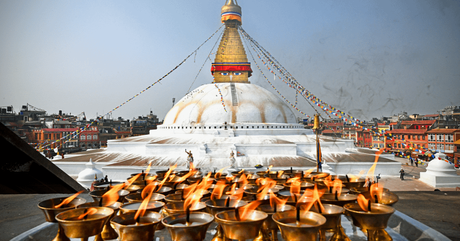

To reach Besisahar from Kathmandu, it takes around 6 to 7 hours of drive – you will be on 175 kilometers of long drive from the capital city of Nepal.
Dont get upset if you dont like long travel in a vehicle since you will be welcomed by the majestic views of Annapurna, Dhaulagiri, and Machhapuchhre mountains on the way as you ride across the banks of Trisuli and Marshyangdi rivers.
Besisahar To Dharapani/Koto
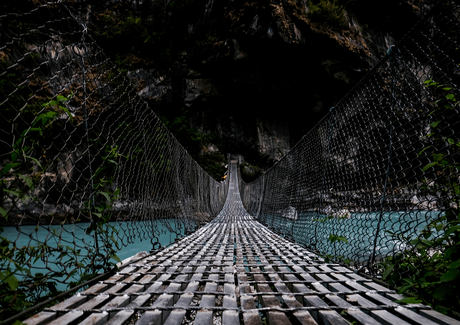
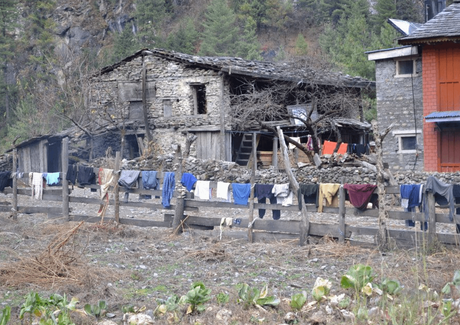
The next day, you will start your trip on a vehicle to Koto – you will be on a seasonal road for 6 hours from Besisahar to reach your destination.
On the way to Koto, you will be welcomed by the beautiful Chamche (Bung) waterfall and Octopus Waterfall. Similarly, the majestic Manaslu and Lamjung Himal will always be on your sight to keep your journey calm and soughtful.
To reach Koto, you will be passing across Jagat, Tal, Dharapani, Timing, and Thanchok, and other spots. You will have to obtain a permit to start your hike ahead.
Koto To Meta Trek

Once you obtain the trekking permit in Koto, your next destination is Meta. Be assured that your hike will be a worthy one since you will be on the verge of relishing a once-in-a-lifetime experience as you pass through the suspension bridge over Marshyangdi river. In addition, the cinematic views of Annapurna II and Lamjung Himal makes your trip fruitful.
Just be sure that you are in a good physical condition since your hike will be on rocky terrain. There are several tea houses available in Chomche where you can have your meal and you can stay overnight in Meta.
Phu Gaun Trek
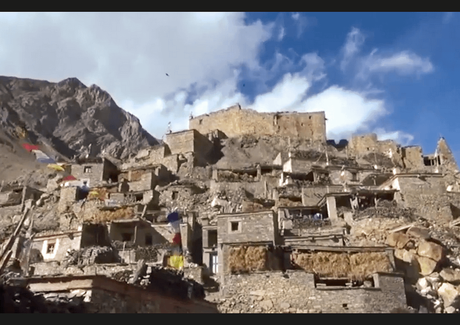
The next morning, you will be on a new mission and that is to reach Phu Gaun. From Meta, it takes around 8 to 9 hours to reach Phu Gaun. The important thing you must be awared is that there is a split way to Nar and Phu, and you should be getting on the trail to Phu Gaun – don’t be confused. You will be passing across the traditional villages of Chyakku and Kyang from where you can see the majestic view of Pisang Peak. Similarly, your trail goes around the bank of Phu river and after a few hours you will reach the gate of Phu Village, where you can stay overnight having a cozy meal.
Phu Gaun to Nar Phedi

One thing that you should remember is that you need to get back to the same split way that leads to Nar and Phu for your next hike.
You will head towards Nar and cross the Nar Khola – in addition, there comes a historical Mahendrapul after which you will reach Satek Monastery. You will stay overnight there at the monastery with the ambience of Buddhist culture amongs the monks.
Trek To Nar Gaun
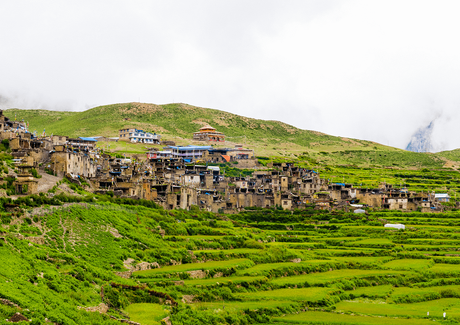
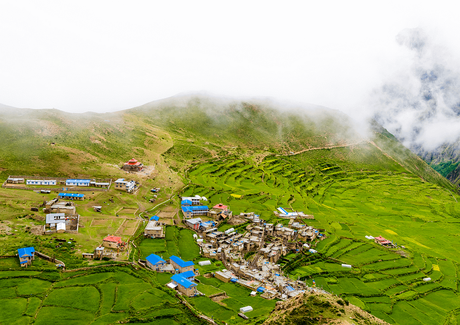
After you stay overnight at Satek Monastery, the next stop you will be heading to is Nar Gau and it takes around 2 hours of hike from Nar Phedi to reach the gate of Nar-Gaun. You will be passing across the rugged uphill way that features the cinematic view of Pisang Peak and Kanguru Peak.
Similarly, the traditional village of Nar and the Buddhist monasteries in the way will be a soothing experience that you will relinquish in this hike.
You can stay at Nar Gaun overnight with cozy local meals including Dal-Bhaat and Dhindo.
Ngawal Valley Trek
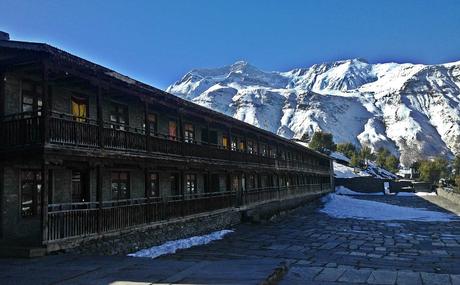
Your next destination is Ngawal valley. Once you wake up in the next morning, you will be heading towards Ngawal valley – the way is uphill and it’s rugged, so be sure to make use of your hiking boots and other gear.
The trek will take you upto Kangla Phedi and it takes around two and a half hours. Likewise, in the journey, you will be passing across some of the spots like Ghatte Khola – mountains like Annpurna II and IV, Kanguru Himal, and Lumjung Himal will always be on your sight to make your journey fruitful.
From Kangla pass, you can see the range of Annpurna mountains and from there, you will be walking downhill to reach Manang valley. After that, you will join the trail of Annapurna Circuit and you will be staying around Ngawal village.
Trek To Pisang
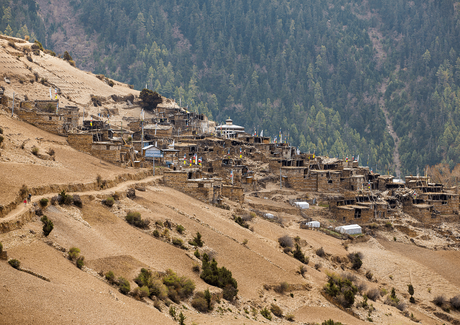
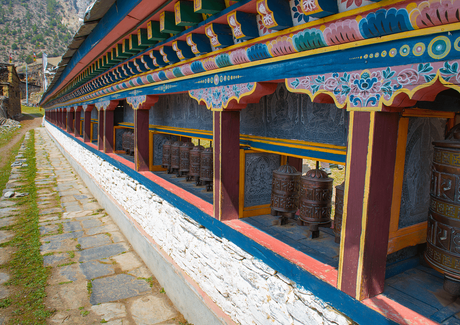
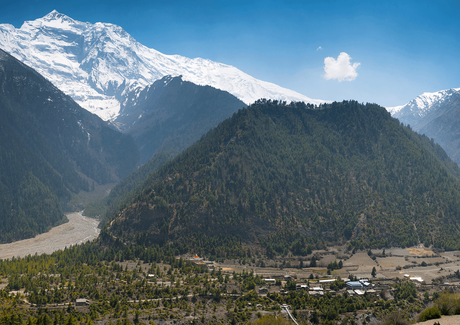
It’s the second phase of you getting back from the Nar Phu trek. From Ngawal valley, it will take a few hours to reach Pisang valley. As mentioned above, you will be passing across the beautiful lake Pisang.
Back To Besisahar And Kathmandu
You can get back to besisahar on vehicle and stay at a hotel once you reach there. After you stay overnight at Besisahar, you will be heading back to Kathmandu.
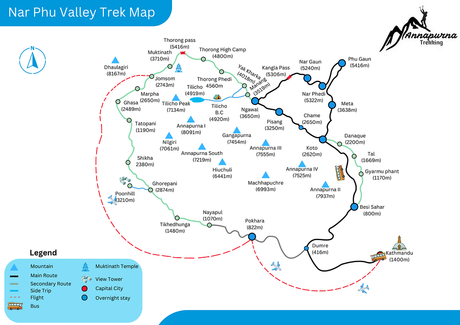
Nar Phu Valley Trek Map
Having a map of Nar Phu Valley Trek is highly recommended. A few key things to be aware of when looking at the map of the Nar Phu Valley are:
The topography and lay of the land
You will want to familiarize yourself with the location of areas such as villages, guesthouses, passes and water sources.
The distances between villages and waypoints
This will give you an idea of how far you can expect to walk each day.
Places to rest and take shelter
Having knowledge of where the nearest places are for an overnight stay or a quick rest stop can come in handy if you get caught in bad weather or need a break from walking.
Highlighted trails and routes
When viewing the map you should be able to pick out which trails are used for trekking and which ones are not.
By having a clear understanding of these things before embarking on your Nar Phu Valley trek, you will be much better prepared and have less worries while exploring this beautiful part of Nepal.
Accommodation Facilities During Nar Phu Valley Trek
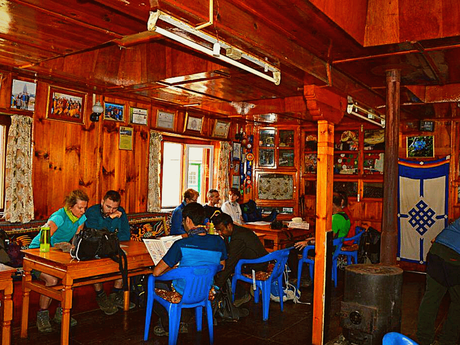
Before you can embark on your Nar Phu Valley Trek, you will need to plan for the accommodation facilities available during this trek. The accommodation will depend on your itinerary and budget, so you will need to make sure that you have a clear idea of both before you decide.
There are a variety of accommodation options available during the Nar Phu Valley Trek. You can choose from basic tea houses with shared bedroom and bathroom facilities, homestay with local families, or camping under the stars.
The teahouses offer basic amenities and usually run on a first-come-first-served basis unless alternative bookings have been made in advance. Camping is another great option if you don’t mind roughing it for a few days in exchange for some incredible views and experiences.
Whichever option you choose, make sure to research thoroughly and plan ahead in order to make the most out of your Nar Phu Valley Trek experience!
Gears And Equipments Required For Nar Phu Valley Trek
There are few essential gears and equipment that you must carry while doing the Nar Phu Valley trek. Firstly, you will need a good quality of hiking shoes which can provide you with good grip and comfort. Make sure that they are waterproof and comfortable to walk in.
Secondly, you will need walking sticks which will help you to keep your balance and walk comfortably throughout the trek.
Thirdly, it is important to have a good quality backpack of 40L – 50L capacity with an adjustable hip belt; this will help you to carry your stuff with ease.
Fourthly, do not forget to carry a raincoat or poncho as the weather can be unpredictable.
Lastly, it is essential to carry your first aid kit along with some necessary medicines like Diamox which helps in preventing altitude sickness.
Physical Requirements To Reach Nar Phu Valley
The Nar Phu Valley is a remote area in the Annapurna region of Nepal. Hence, it requires a high level of physical fitness and endurance to reach. The trek to Nar Phu involves several days of hiking at high altitudes, often over rough and rugged terrain. You will need to be able to walk for long periods and also carry a backpack with your gear.
An excellent physical condition is required before embarking on this trek, as the hike’s high altitude and rugged nature can be a challenge for those who are not used to it. You should be able to walk for at least 6-7 hours per day and be able to carry a backpack weighing up to 20kg. You should also be able to handle uneven terrain, such as rocky paths and steep inclines.
In addition to physical fitness, it is important to have a good level of mental and emotional resilience for this trek. The Nar Phu Valley is a remote and isolated region, and you will be spending several days in the wilderness without access to modern amenities.
It is important to be able to cope with the isolation and challenge of the environment, and to have the mental and emotional strength to deal with any unexpected situations that may arise.
Overall, it is important to be in good physical and mental condition before embarking on the Nar Phu Valley trek. It is advisable to train and prepare yourself before the trek. And also consult with a healthcare professional to ensure that you are fit and healthy enough to undertake this challenging adventure.
Transportation Facilities During Nar Phu Valley Trek
Now let’s talk about the transportation facilities during your Nar Phu Valley Trek. It is essential to know that there are no direct buses connecting Kathmandu to Nar Phu and returning. Planning and booking your trip in advance is key to a successful trek.
You can either hire a jeep service from Kathmandu to reach the starting point of your trek. If you hav e enough budget, you could even go for a flight from Kathmandu to Jomsom Airport. Apart from this, public buses are also available which ply between Kathmandu and Besishahar – the base of your trek. From here, private jeeps are available to reach nearby villages like Deng, Chame, Koto etc. These places will serve as pitstops during your trek.
Hitchhiking is also an option, but please consider if it’s safe for you. During peak seasons, these routes gets crowded. So you may have difficulty getting a ride back after your trek.
If you’re looking for an epic trekking experience, look no further than the Nar Phu Valley Trek. With jaw-dropping scenery and plenty of challenging terrain, this trek is perfect for experienced hikers. Be sure to consult the itinerary map and permit requirements before embarking on your trek. Also be sure to budget appropriately for this once-in-a-lifetime experience.
FAQs About the Nar Phu Valley Trek
You’re probably wondering what kind of paperwork and permits you’ll need to complete your Nar Phu Valley Trek in 2023. Luckily, the process is relatively straightforward!
Do I Need A Permit For Nar Phu Valley Trek?
First up, you’ll need to apply for an Annapurna Conservation Area Project (ACAP) permit. This permit costs NPR 2000 per person, and is simple to obtain through a local trekking agency or online. You may also have to pay a ACA fee, depending on what part of the trail you plan to explore.
Next, you should consider acquiring a Trekkers Information Management System (TIMS) card. The card is meant to facilitate registration of trekkers in each district they visit during the trekking. And it can costs around NPR 1000 per person.
Do I Need Insurance For Nar Phu Valley Trek?
You may also want to consult a travel insurance provider prior to departure—just in case anything goes wrong on the trails! Once all the necessary paperwork is taken care of, you’re ready for the adventure of a lifetime.
Where is Nar Phu Valley?
Nar Phu Valley is located in the remote villages of Nar and Phu. It sits near Chame in the Annapurna Circuit.
You can get groomed with the local lifestyles of Khampas (Tibetan refugees) and their culture in Nar Phu Valley.
